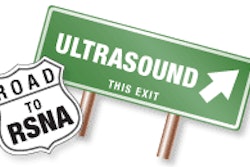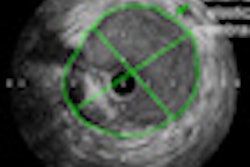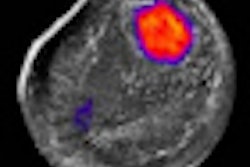Sunday, November 28 | 11:15 a.m.-11:25 a.m. | SSA21-04 | Room S504AB
Elastography has been drawing interest as a means to use ultrasound to detect pathology by detecting signs of tissue stiffness. In this study, researchers from the University of Washington in Seattle will discuss their method to use elastography on thyroid nodules.Thyroid nodules are a common medical problem, but only 5% are malignant. Biopsy is typically conducted with fine-needle aspiration (FNA); some 300,000 thyroid biopsies are performed each year in the U.S., with 70% of these proving benign.
For the past five years, the authors have been working on a thyroid elastography technique using internal compression provided by the carotid artery. Internal compression has a couple of advantages over external compression, they believe: It reduces operator dependency and the strain estimation error can be minimized, making the technique more repeatable and accurate.
The researchers examined the technique in a population of 82 patients with 92 nodules who were referred for FNA biopsy. Elastography was performed by a commercially available ultrasound machine (HI Vision 5500, Hitachi Medical Systems America, Twinsburg, OH).
Rather than assigning tissue scores based on visual inspection, the researchers calculated an elasticity contrast index (ECI) to quantify the difference in stiffness between a nodule and its surrounding normal tissue. A larger ECI value indicates a stiffer nodule and, thus, an increased chance of malignancy.
The researchers found that the 12 malignant nodules in their patient population had a mean ECI of 6.32 ± 2.25, significantly higher than that of the 80 benign nodules, which had a mean ECI of 3.39 ± 1.58 (p = 0.0008). This indicates that malignant nodules are stiffer than benign nodules compared with surrounding normal tissue.
Using a cut-off ECI value of 3.85 to indicate malignancy, all 12 malignant nodules could be detected, leading to a sensitivity of 100%, specificity of 73.8%, positive predictive value of 36.4%, and negative predictive value of 100%.
The paper will be presented by Yongmin Kim, PhD.



















